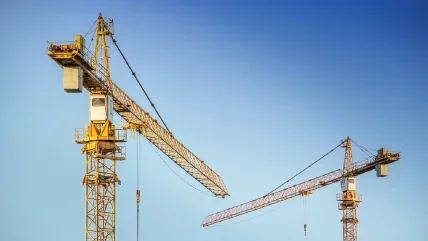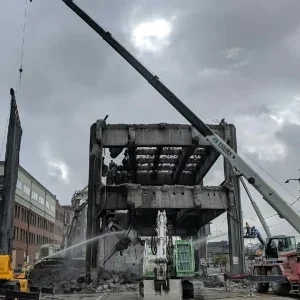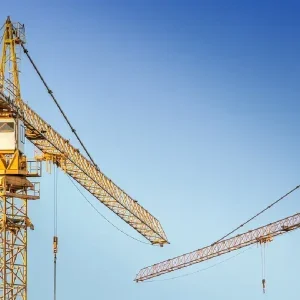
Introduction
The cranes industry, a cornerstone of construction, logistics, and infrastructure development, faces significant challenges due to inflation. Rising costs of materials, labour, and financing can impact project budgets, timelines, and profitability. This article explores the effects of inflation on the cranes industry, delves into related challenges, and presents strategies to mitigate these impacts. By understanding these factors and implementing adaptive measures, industry players can better navigate the economic landscape and maintain their competitive edge.
Understanding inflation
Definition and Causes
Inflation is the rate at which the general level of prices for goods and services rises, eroding purchasing power. Several factors contribute to inflation, including:
- Demand-Pull Inflation: When demand for goods and services exceeds supply, prices increase.
- Cost-Push Inflation: Rising costs of production, such as wages and raw materials, lead to higher prices.
- Monetary Inflation: Excessive money supply growth can devalue currency and increase prices.
- Global Factors: International events, such as trade disruptions or geopolitical tensions, can affect prices globally.
Historical Context
Inflationary periods have varied causes and impacts:
- 1970s Oil Crisis: Sharp increases in oil prices led to widespread inflation and economic slowdown.
- 2008 Financial Crisis: While initially deflationary, subsequent stimulus measures contributed to inflationary pressures.
- COVID-19 Pandemic: Supply chain disruptions, labour shortages, and stimulus spending have resulted in increased inflationary pressures globally.
Impacts on the cranes industry
Rising material costs
Inflation can significantly impact the cost of materials essential for crane manufacturing and construction:
- Steel Prices: As a primary material for cranes, steel price increases can lead to higher production costs.
- Electronics and Components: The cost of electronic components and specialised parts can also rise due to inflation.
- Fuel Costs: Increased fuel prices affect transportation and operational costs, impacting project budgets.
Labour cost increases
Labour costs are a major factor in the cranes industry, and inflation can lead to:
- Wage Inflation: Rising living costs can drive demands for higher wages, increasing overall labour costs.
- Skill Shortages: Inflation can exacerbate skill shortages as workers seek higher-paying jobs in other sectors.
- Contractor Rates: Increased costs for subcontractors and specialised labour can impact project budgets and timelines.
Financing challenges
Inflation can also affect financing conditions for cranes industry projects:
- Interest Rates: Central banks may raise interest rates to combat inflation, increasing borrowing costs for companies.
- Credit Availability: Tighter credit conditions can make it more difficult for companies to secure financing for projects and operations.
- Investment Returns: Inflation can erode the real returns on investments, impacting long-term financial planning.
Project delays and budget overruns
Inflation can lead to project delays and budget overruns through:
- Escalating Costs: Rising costs for materials, labour, and equipment can strain project budgets and timelines.
- Contract Renegotiations: Inflation can necessitate contract renegotiations, leading to delays and increased administrative costs.
- Supply Chain Disruptions: Inflationary pressures can exacerbate supply chain disruptions, causing delays in material deliveries.
Strategies for mitigating the impact of inflation
Cost management and optimisation
Effective cost management is crucial for mitigating the impacts of inflation:
- Bulk Purchasing: Buying materials in bulk can help lock in prices and mitigate the impact of future price increases.
- Supplier Relationships: Building strong relationships with suppliers can lead to better pricing and more reliable deliveries.
- Cost Monitoring: Implementing robust cost monitoring systems to track expenses and identify areas for cost savings.
Contractual strategies
Adopting strategic contractual approaches can help manage inflation-related risks:
- Fixed-Price Contracts: Where possible, securing fixed-price contracts can protect against future cost increases.
- Escalation Clauses: Including escalation clauses in contracts to allow for adjustments based on inflation indices.
- Long-Term Agreements: Entering long-term agreements with suppliers to lock in prices and ensure material availability.
Financial planning and risk management
Proactive financial planning and risk management are essential for navigating inflation:
- Hedging: Using financial instruments to hedge against price increases for key materials and inputs.
- Contingency Funds: Establishing contingency funds to cover unexpected cost increases and project overruns.
- Diversified Financing: Diversifying financing sources to mitigate the impact of rising interest rates and credit constraints.
Technological investments
Investing in technology can enhance efficiency and reduce costs:
- Automation: Implementing automation technologies to reduce labour costs and increase productivity.
- Digital Twins: Using digital twin technology to optimise crane operations and project planning.
- Predictive Maintenance: Utilising predictive maintenance to reduce downtime and extend the lifespan of equipment.
Workforce management
Effective workforce management can help mitigate the impact of rising labour costs:
- Training and Development: Investing in training and development to improve worker productivity and retention.
- Flexible Work Arrangements: Implementing flexible work arrangements to attract and retain skilled workers.
- Performance Incentives: Offering performance-based incentives to align worker goals with company objectives.
Case studies and industry best practices
Case study: Liebherr’s inflation mitigation strategies
Liebherr, a global leader in crane manufacturing, has effectively managed inflationary pressures through:
- Supply Chain Optimisation: Diversifying suppliers and securing long-term agreements to stabilise material costs.
- Innovation: Investing in R&D to develop more efficient and cost-effective crane models.
- Financial Resilience: Maintaining a strong balance sheet and conservative financial policies to weather economic fluctuations.
Best practice: JLG Industries’ cost management
JLG Industries, a prominent player in the cranes industry, has adopted effective cost management practices:
- Lean Manufacturing: Implementing lean manufacturing principles to reduce waste and improve efficiency.
- Strategic Sourcing: Building strong relationships with key suppliers to secure favourable pricing and reliable deliveries.
- Technology Adoption: Investing in advanced technologies to enhance operational efficiency and reduce costs.
Outlook and industry adaptation
Embracing sustainability
The cranes industry is increasingly recognising the importance of sustainability in mitigating inflationary impacts:
- Energy Efficiency: Investing in energy-efficient technologies to reduce operational costs and dependence on volatile energy markets.
- Green Construction: Adopting green construction practices to meet regulatory requirements and reduce long-term costs.
- Renewable Energy Projects: Participating in renewable energy projects, which can be less susceptible to inflationary pressures.
Leveraging data analytics
Data analytics can provide valuable insights for managing inflationary impacts:
- Cost Forecasting: Using data analytics to forecast cost trends and plan accordingly.
- Supply Chain Analysis: Analysing supply chain data to identify vulnerabilities and optimise procurement strategies.
- Performance Metrics: Tracking performance metrics to identify areas for improvement and cost savings.
Preparing for economic cycles
Preparing for economic cycles is crucial for long-term resilience:
- Scenario Planning: Conducting scenario planning to anticipate and prepare for different inflationary environments.
- Financial Reserves: Building financial reserves to cover unexpected costs and economic downturns.
- Agility and Flexibility: Developing an agile and flexible organisational structure to quickly adapt to changing economic conditions.
Conclusion
Inflation presents significant challenges for the cranes industry, impacting material costs, labour expenses, financing conditions, and project timelines. However, by implementing strategic measures such as cost management, effective contractual strategies, proactive financial planning, technological investments, and workforce management, companies can mitigate these impacts and maintain their competitiveness.
The future of the cranes industry lies in embracing sustainability, leveraging data analytics, and preparing for economic cycles. By adopting these approaches, the industry can not only navigate the challenges posed by inflation but also position itself for long-term success and growth. Through a combination of innovation, collaboration, and strategic foresight, the cranes industry can continue to play a vital role in global construction and infrastructure development, even in the face of inflationary pressures.






